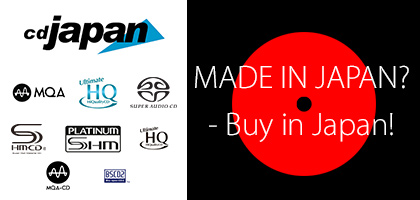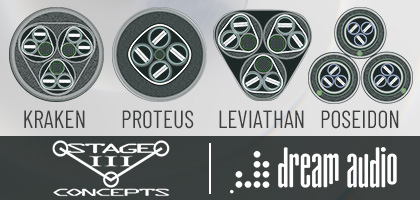My professional career
I don’t have enough time to describe in detail my professional career of over 40 years. But I would like to mention of a few memorable product names that I have developed either on my own or as a manager or general manager of the engineering department. I worked in TEAC for about 4 years as a mechanical engineer designing open reel tape recorder and I think I learned everything about the technology of tape transport. I drew so many plans of mechanical parts for TEAC A-7300, high performance 2-track, 38 cm/sec semiprofessional tape recorder. And with this 4 years of experience I came to PIONEER and for the next 17 years I was in charge as a group leader or a manager in the engineering department of mainly cassette tape recorder. At that time I was already an expert of designing high performance “dual-capstan mechanism”. My interest and task was how to reduce the “wow & flutter”. And my team developed so many models in every year such as CT-A1, CT-A9, CT-91, CT-93 through 1980s but in 1992 we could release the ultimate cassette deck named PIONEER CT-95 (or T-1100S for the Japanese market). Combined with my “Reference Master Mechanism”, newly developed Dolby S system, precise automatic tape tuning system and so many improvements, CT-95 got the highest rating of German audio magazines. They said that CT-95 surpassed even the famous Nakamichi Dragon. It was my secret medal and delight.

And one more impressive model to mention is PIONEER DV-AX10. It was the world’s first real universal player, capable of playing CD, SACD, DVD, DVD-AUDIO discs. Not only the DVD video quality was remarkable but also the CD sound was full of musicality. DV-AX10 got the gold medal of HiVi (Monthly Japanese magazine) among all of the 1999 audio-video products in Japan. As a general manager of DVD engineering department I could feel delight and honor. And I met one fabulous engineer, Mr. Banno who struggled to manage the engineering team of about 40 people as the manager and looked for a breakthrough in a range of hard developing issues. And would you believe that after 10 years Mr. Banno and I are every day in hot pursuit of a nice sounding D-class amplifier in SPEC corp. He and I could experience so many types of sound during these developing stages of AX10 and it also seems those experiences led to the development of D-class Amplifier.

How I was led to D-class amplifier
Around the end of 1990s and the beginning of 2000s PIONEER corp. reached its full bloom. So we could have the rare chance to develop a high-end DVD player such as AX10. Also we had a well-designed, spacious listening room and could select high-priced speakers, pre-amplifier and power amplifier as the reference at that age for our development of AX10. I remember that I got B&W801, it was the standard or the reference of specialist audio shops in our domestic market. Of course B&W801 were driven by high power semiconductor amplifiers of famous domestic and foreign brand. But I and also Mr. Banno had never been moved by the sound of this high-end audio system. The sound looked like watching miniature paintings, we could hear out all the details but could never be touched by this music. We felt the sound, very precise but one-dimensional and lacking any dynamic or rhythm. But when I came back home and listened to the music on my old high efficiency system, I was intoxicated by the music playback. So transparent, so natural and just like organic sound. I felt the difference of the sound came from the distinction of some dynamic characteristic of two systems not only from static one. But I couldn’t understand clearly the reason why at that time.
It was unexpected but my career in the engineering department was over in the spring of 2000 and I was transferred to work in a subsidiary production company at Semarang/Indonesia for management reconstruction as President Director. So I should have to depart far away from the sound of my old system. And I could experience so many hardships about all the aspects of my life in an equatorial foreign country and I think those hardships in unfamiliar circumstances or the nature of rainforest had fostered my some inner strength and musical hearing ability. But Indonesia has become my second home province right now.
Coming back to Japan I was put in charge of research and development center at the end of my career in PIONEER. So I could choose a good sound system with an amplifier and speakers by myself for the job. It remains in my memory that one day in October 2006 I had a chance to hear the demonstration of new D-class amplifier devices and the prototype amplifier those devices were used. I was very impressed by the sound, it was only a prototype so the sound was not sophisticated but rich mid to low range made it feel like a good tube amplifier with similar musicality in it. I felt obviously the differences from the sound of a traditional semiconductor amplifier. On December 9th, 2006, on another business trip I had a chance to talk to the person who developed the amplifier in Los Angeles, California. As a matter of fact, he was my junior colleague from PIONEER corp. and also privately a good friend in terms of audio. Mr. Honda emigrated to USA with his family and found a job in “International Rectifier”, semiconductor manufacturer specializing in power management called IR. After around 6 years working in IR, he just developed newly D-class devices. I felt he was not only a nice guy but also an excellent engineer with some genius for the audio circuitry so a dinner with him at a seaside restaurant was a full delight. We talked about our private life and of course about audio, especially his newly developed devices. It was a great night for us and factually this meeting with him was the start of my searching for the musical sound from the brilliant IR D-class devices. And not long after that we started our new company, “SPEC CORPORATION”, on February 6th, 2010.

I already had a lot of know-how on how to break in those devices to improve musicality. There are two major points: one is the low-pass filter in the final stage of D-class amplifier and the other major point is the quality of the power supply. But today I would like to mention about the low-pass filer. The role of this filter is very important for the switching amplifier, because it filters out the PWM switching career about 400 kHz in an efficient manner and it passes along pure analog signal current to the speaker. This circuitry is so simple, it is composed of a single inductor and single capacitor, but the quality of the analog current, in other words the sound quality depends mainly on the quality of those two parts. And I should say that the switching ability of IR D-class amplifier devices is nearly mostly perfect. IR states that the efficiency of the power transformed to the speaker reaches 96% at maximum power. Yes, we got the new generation audio power handling devices! And I believe firmly that these facts should be a good news for music lovers in the world.

I would like to go back to my story about low pass filter. At the end of 2009 I had reached a conclusion that best capacitor to use in this filter was the vintage oil-filled capacitor or “Hermetic-seal” marking with WEST CAP, CPV09 0.47/600 made for US military use in 1967. Of course, used as a coupling capacitor it also improved remarkably the sound of my old DA30 non-feedback SE amplifier. In a word, the sound gained musicality, deep bass with no trace of grain in mid to high range. But we couldn’t use these NOS parts for our new D-class amplifier. It was hard to find a solution for this problem, so hard that I can only explain the ensuing fact as God’s intervention. It turned out that the capacitor manufacturer has survived in Tucson, Arizona, USA. It changed its name from “West Cap” to “Arizona Capacitors, Inc.” in early 1990s. Arizona Capacitors took over from West Cap huge quantities of production facilities and engineering drawings. Our company has been working together with Arizona Capacitors as their distributor in Japan, selling quality custom oil-filled capacitors from the summer of 2011. Japanese old tube amplifier fans remember the name of lovely sounding old vintage “Sprague” and “West Cap” capacitors. Our distributing business has been growing because of the high tonal quality of these oil-filled capacitors. We were able to adopt custom oil-filled capacitors for all of our amplifiers, that’s it. I feel a miracle happened to me. Special thanks to Lord that I have been blessed so many times by coming across such high tonal quality parts!

If I were to say something about the excellence of D-class amplifiers I would say that it is important how they control the inevitable back electromotive force (BEMF) from the speaker. In D-class amplifier the current of back electromotive force is directed back to power supply but in a traditional solid state amplifier the current enters forcibly into the feedback circuit. That disturbs precise phase transmission of dynamic music signals. That is the reason why our RSP-101 improves the sound and it helps protect precise amplifier circuits, especially solid state amplifiers with the deep feedback circuit.
Thank you for giving me the chance to share my experience!
 Contents
Contents































